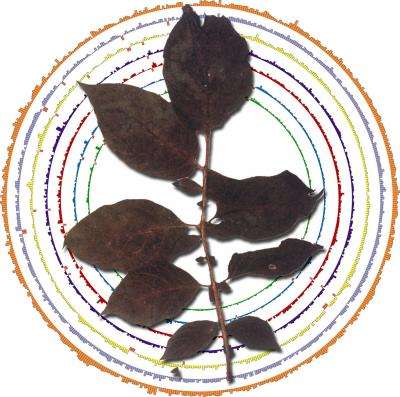Irish potato famine-causing pathogen even more virulent now

(Phys.org) —The plant pathogen that caused the Irish potato famine in the 1840s lives on today with a different genetic blueprint and an even larger arsenal of weaponry to harm and kill plants.
In a study published in the journal Nature Communications, North Carolina State University plant pathologist Jean Ristaino and colleagues Mike Martin and Tom Gilbert from the University of Copenhagen compared the genomes, or sets of all genes, of five 19th century strains of the Phytophthora infestans pathogen with modern strains of the pathogen, which still wreaks havoc on potatoes and tomatoes.
The researchers found that the genes in historical plant samples collected in Belgium in 1845 as well as other samples collected from varied European locales in the late 1870s and 1880s were quite different from modern-day P. infestans genes, including some genes in modern plants that make the pathogen more virulent than the historical strains.
In one example, a certain gene variant, or allele, called AVR3a that was not virulent in the historical samples was shown to be virulent in the modern-day samples.
"The genetic blueprints, or genotypes, of the historical strains were distinct from modern strains, and genes related to infection were also quite different," Ristaino says. "In the areas of the genome that today control virulence, we found little similarity with historical strains, suggesting that the pathogen has evolved in response to human actions like breeding more disease-resistant potatoes."
Some of the differences between the European historical samples from the 1840s and the 1870s and 1880s suggest that the pathogen was brought to Europe more than once, debunking the theory that the pathogen was introduced once and then expanded its range. Ristaino believes it was introduced to Europe multiple times, probably from South American ships.
P. infestans caused massive and debilitating late-blight disease outbreaks in Europe, leaving starvation and migration in its wake after ravaging Ireland in the mid-to-late 1840s. Ristaino's previous work pointed the finger at the 1a strain of P. infestans as the Irish potato-famine pathogen and traced its probable origin to South America.
An estimated $6.2 billion is spent each year on crop damage and attempts to control the pathogen, Ristaino says.
"Late blight is still a major threat to global food security in the developing world," she adds. "Knowing how the pathogen genome has changed over time will help modern-day farmers better manage the disease."
More information: Nature Communications DOI:10.1038/ncomms3172
Journal information: Nature Communications
Provided by North Carolina State University



















